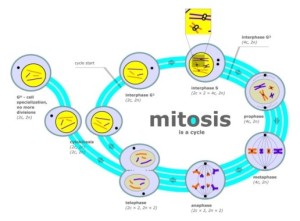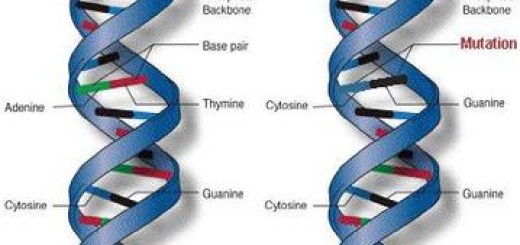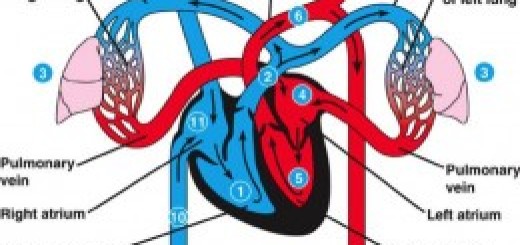Mitotic cell division (Mitosis) or indirect cell division stages & features
The cell division
The cell division is a complicated process through which the living cell divides into two cells or more to aim the growth or the reproduction, There are two types of cell division: Mitotic cell division (Mitosis) or indirect cell division and Meiotic cell division (Meiosis) or reduction division.
Mitosis
Mitosis occurs in the somatic cells such as all the body cells except the reproduction cells and the neural cells, The roots cells, the stems cells, and the leaves cells ( in the plants)?
Mitosis plays an important role in the growth of living organisms (the animals and the plants), in compensation of the damaged cells, and in completing the asexual reproduction process.
The cell passes through a phase called the interphase, During the interphase before starting Mitosis, the cell prepares for division (through some important biological processes), and the amount of genetic material (DNA) duplicates.
Mitosis stages
Prophase: You should understand that the chromatin reticulum condenses, and it appears in the form of long, thin and double strings (the chromosomes), You know that the network of filamentous fibers called the spindle fibers that are formed extending between the two poles of the cell, The nuclear and nucleolus membrane disappear.
Metaphase: You should know that the chromosomes which are connected with the spindle fibers are arranged along the cell equator in this phase.
Anaphase: You must know that in this phase, the centromere of each chromosome splits lengthwise into two halves, so, the chromatids separate from each other, The spindle fibers begin to shrink and two identical groups of chromosomes (each contain single chromatid ) are formed, and each group of chromosomes migrates towards one of the cell’s poles.
Telophase: You must understand that when the spindle fibers disappear, The nuclear membrane is formed at each pole of the cell surrounding by the chromosomes leading to the formation of two new nuclei, and at the end of this phase, the cell is divided into two new cells, the number of chromosomes in each of them is equal to the number of chromosomes of the parent cell (2N).
The changes which occur in the telophase are called the adverse changes as they inverse the changes which occur in the prophase stage, some cells in the human body are not divided at all such as the nerve cells and red blood cells.
The spindle fibers are formed from condensing the cytoplasm at the cell poles in the plant cell, And the spindle fibers are formed by the centrosome in the animal cell.
Some somatic cells such as the liver cells are not divided in normal conditions but they retain the ability to divide under certain circumstances.
If the liver gets injured or a part of it is cut, the remaining cells undergo many mitotic divisions to compensate for the missing part, It is the scientific basis used in liver transplantation.
Cells types, Chromosomes, Cell division, Phases of mitosis division & Liver Transplantation
Meiotic cell division (Meiosis) or reduction division
What are the importance and structure of chromosomes?
Human karyotype, Chromosomes, and Genetic information
Structure of Nucleic Acid (DNA), Enzymes, DNA replication and DNA repair mechanism
Genes, Chromosomes, Proteins, Bacteriophages & Quantity of DNA in the cells
Cell division types, Mitosis, Meiosis, Reductional division & Equatorial division




